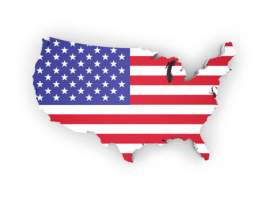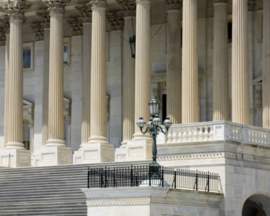
Taft Hartley Act

What is the Taft-Hartley Act?
The 1947 Taft-Hartley Act was passed as an amendment to the 1935 National Labor Relations Act with the intention of halting some of the rights given to unions to strike and imposing limitations on the union leaders. This legislation was in response to an increased number of strikes in the years after World War II and the growing threat of industrial competition with the Soviet Union. The Taft-Hartley Act provided for long term changes in the way unions operate and strike and most provisions are still in effect today.
Specifically, the Taft Hartley Act, Located in Title 29 Chapter 7 Subchapter I states:
“Industrial strife which interferes with the normal flow of commerce and with the full production of articles and commodities for commerce, can be avoided or substantially minimized if employers, employees, and labor organizations each recognize under law one another’s legitimate rights in their relations with each other, and above all recognize under law that neither party has any right in its relations with any other to engage in acts or practices which jeopardize the public health, safety, or interest.”
What was banned under the Taft Hartley Act?
So as to comply with new provisions to prevent stoppages to the flow of commerce, certain types of strikes were outlawed, such as “wildcat striking” which was striking without union approval. Additionally, “closed shop” workplaces that mandated that all employees join a union were made illegal. Therefore, an employer may hire non-union employees at his or her discretion and that employee may never opt to join the union. Technically, this is under the discretion of the worker and not subject to intimidation or the decisions of outside parties, although this is not always the case.
“Right to work” laws further protect employees from mandatory membership in labor unions and these laws are effective in 22 states, many in the South and Plains states. The intention of these laws is to stop “forced unionism” and blunt the power of unions in a system that is argued to favor unions over employers. Forced union-related activity, such as making the payment of union dues as a condition for employment would constitute a closed-shop workplace and a violation of the state’s right to work law. Proponents of right to work laws point to political contributions from unions to causes that the workers may not support as a primary reason to allow some workers to not join the union, with impunity.
The President is authorized to end any strike that endangers national security, including transportation and communications industries subject to review by federal courts. The President’s actions can also force the parties back into negotiations and reach a settlement to expedite the end of a national-security endangering labor action.
What are added restrictions on unions due to the Taft Hartley Act?
The Taft Hartley Act added unfair labor practices to unions to compliment restrictions placed by previous legislation on unfair employer labor practices. These restrictions include:
- Forced coercion of other employees in electing a representative
- Forcing employers to discriminate against employees
- Refusing to engage in collective bargaining when the employer is willing
- Sympathy striking (secondary boycotts)
- Excessive dues
- “Featherbedding” – requiring the employer to pay for unneeded workers
- “Hot cargo” – refusing to handle goods from certain, anti-union employers
- Health care worker strikes without prior notice.
What are criticisms of the Taft Hartley Act?
Critics argue that such measures create a class of unrepresented workers that receive unequal treatment, sometimes positive, sometimes negative due to their lack of union representation. Subtle, unspoken discrimination may make unionized works less desirable to an employer due to the protections the union grants them. Non-unionized workers lack this and therefore may be a more attractive option to the employer.
The Taft Hartley Act has been viewed as an unfair infringement on the rights of workers in the workplace by limiting their ability to strike and creating fractured union solidarity as some employees will choose not to join the union. This will either weaken the union’s position or create a free rider problem, with non-union workers benefiting from paid dues and workplace improvement gains made by union workers, in spite of not paying to financially support then union.
Lastly, critics of the Taft Hartley Act and subsequent right to work laws contend that without a union employers can easily exploit workers and pay less attention to workplace conditions and safety, much in similar to workplaces before the advent of organized labor. The lack of a right for these employees to collectively bargain is also detrimental and could potentially depress wages and benefits for union and non-union workers alike.
How does the Taft Hartley Act work in practice?
Some unions use inventive measures to skirt “anti-closed shop” regulations. The Screen Actors Guild, mandates that actors not part of the union can work on union sets for thirty days before having the join the union. At that point, they may only work on non-union sets. Members of the SAG may not work on non-union sets. The SAG is able to skirt Taft-Hartley rules by allowing those non-union acts on union sets to join after thirty days, rather than outright closing the set to them. The SAG also provides low budget contracts to encourage productions outside of major studies to hire unionized actors.
How does Taft Hartley labor dispute resolution work?
The National Labor Relations Board is the supervisory body that manages the formation of unions and prosecutes violations of the National Labor Relations Act. Under the watch of the NRLB, unionized and non-unionized workers alike are guaranteed federal protections to demand better wages and conditions. This includes protections against employers as well as labor unions themselves that may potentially prevent their members from organizing against an employer. The National Labor Relations Board investigates labor complaints through Regional Directors that find witnesses to corroborate charges against employers. Without evidence, the case against the employer will be dropped before it even begins. The decision of the Regional Director to issue a complaint about the employer can be appealed to the Office of the General Counsel, who has the final decision on these matters and therefore cannot be opposed in court. Alternatively, the employers and employees can engage in contractually mandated dispute resolution, such as arbitration or mediation, so as to avoid labor stoppages and federal authority on the case.
The NRLB maintains 34 local offices serving all fifty states across state boundaries to take regional and population distribution into consideration. The San Francisco office, for example, services Northern California, with a representative in Hawaii for logistical efficiency. Los Angeles has two NRLB offices that split up Southern California. Every office maintains dispute resolution services and administers rulings over illicit employer dealings. Online, the NRLB maintains guides for employers and employees to remain within the boundaries of the law.



















